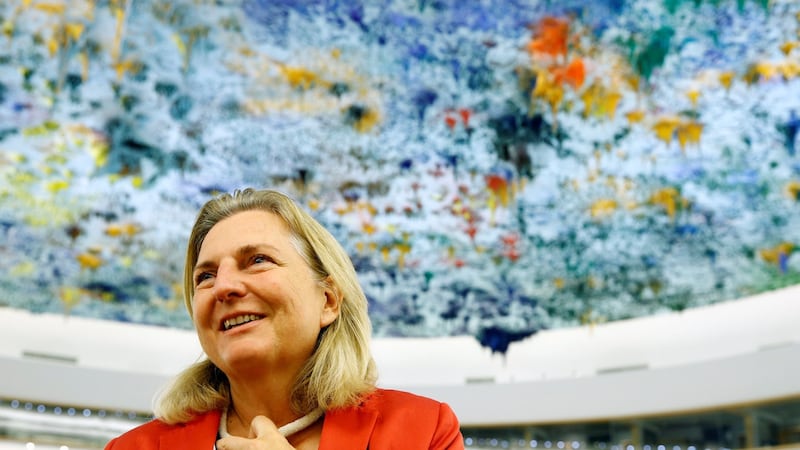Austria insists that it still remains unaware of, though is deeply concerned about, the details of German proposals to open transit centres for processing and turning back asylum seekers on the Bavarian border.
But its pledge to close down the Italian-Austrian border to refugees remains very much in place and is causing widespread concern in EU capitals that it could mean the unravelling of the border-free Schengen system.
Ministers and spokespeople for the government in Vienna told visiting Brussels-based journalists they hope greater clarity will come from discussions on Thursday when prime minister Sebastian Kurtz will meet the Bavarian CSU leader Horst Seehofer, the architect of German plans, in Vienna.
The government here has complained that it has not been consulted by the Germans about their plans, but minister for Europe, integration and foreign affairs Karin Kneissl also admitted that Vienna has not been in touch with Rome about its own border.
While insisting that Austria had done more than the majority of EU member states in taking in and integrating genuine asylum seekers, the minister went on to question how many of those coming were genuinely fleeing persecution.
She said she had worked in refugee camps as a translator and it was clear to her that many of the young men she spoke to were economic migrants and often were not, as they claimed, even Syrian, but Palestinians and Jordanians.
Outdated instruments
The truth is, she said, that the instruments Europe has for dealing with asylum date from a pre-globalisation age and “don’t meet the exigencies of today” – those genuinely persecuted for their political activities tended to be older activists left behind to continue their fight under difficult circumstances.
“They can’t apply for asylum,” she said. “We have to stick to the realities. What is the real world about?”

Austria assumed the rotating presidency of the EU on July 1st and its presidency slogan, “a Europe that protects”, reflects the country’s preoccupation with the migration issue. “We are not a single-issue presidency,” journalists are told repeatedly. But it feels like that.
And one in which the presidency agenda – a responsibility to act as an impartial chair and to broker or advance issues to agreement at summits – perhaps corresponds more closely to the Austrian national agenda than is normal.
Charged by the other member states with finding a way to a common understanding on migration for next December’s summit, the Austrians insist that their emphasis will be on cutting external pressures by addressing the factors which push migration.
Friction and deadlock
For too long the emphasis has been exclusively, we are told, on the internal dimension of the problem, creating a dynamic that inevitably leads to friction between member states and political deadlock.
Progress was made at last week’s summit, however, we are told, on the external pull factors – commitments to increasing the EU border force, to seeking to establish disembarkation “platforms” in north Africa, and to explore the possibility of “hot spot” processing facilities on the European mainland in willing states. These are “not camps”, we are told.
It’s an implicit acknowledgment that the presidency does not expect to make progress on the internal so-called Dublin regulation which requires the member state where a migrant first arrives to take responsibility for them.
Austria, like Hungary and several other eastern states, dislikes the idea of mandatory "burden-sharing" of refugees , a key element of commission proposals to amend Dublin – and demanded by Italy.
It insists the issue can only be advanced through “consensus”, or at the pace set by the least willing member state. And it rejects the possibility of putting any quota formula to majority vote – a recipe for certain continuing deadlock.










